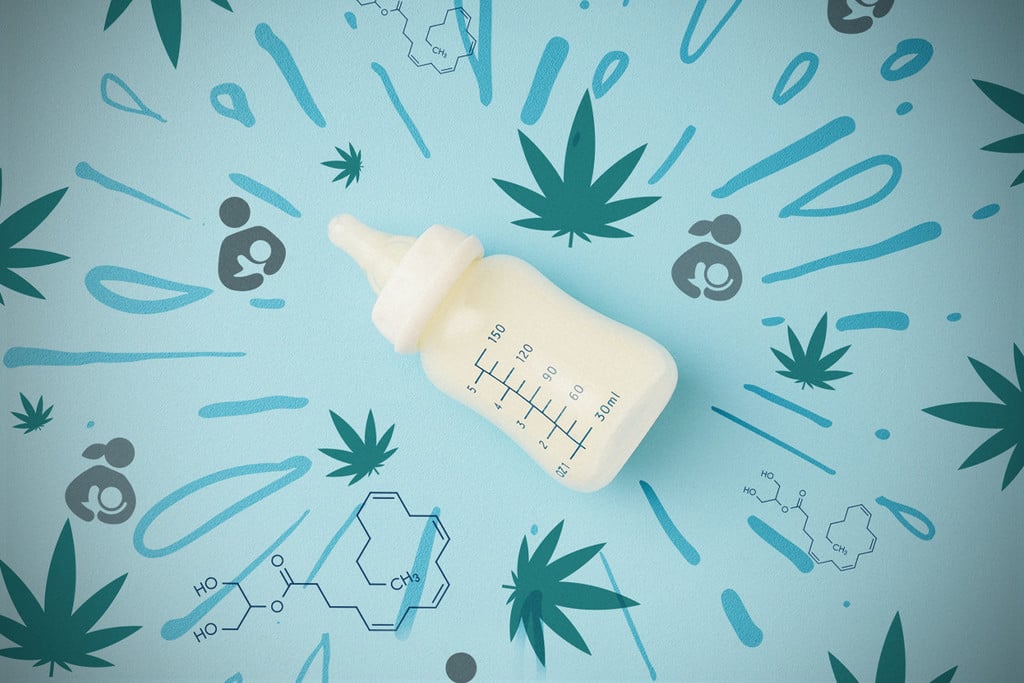.
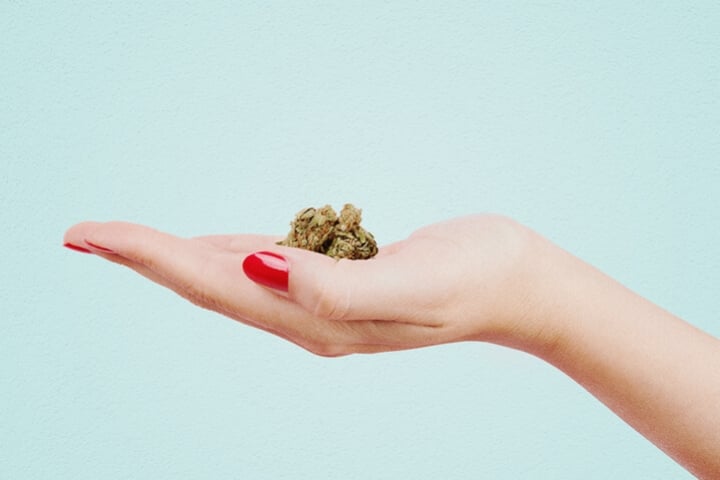
Women Using Cannabis To Improve Their Lifestyle
Although it used to be considered unladylike, modern day women use cannabis - a lot. According to a Forbes article released in 2017, women smoke more than men these days.
Contents:
Reports estimate that women’s health will reach a market size of over $58 billion by 2030 in the United States alone. This field focuses on providing solutions to a range of issues that women face, including infertility, endometriosis, menopause, and osteoporosis.A variety of drugs and lifestyle interventions hold promise for these physiological phenomena. But where does cannabis stand among these options?
From a dangerous drug to a perceived panacea, countries the world over have started to change their opinions on cannabis. Abandoning draconian histrionics and giving credence to science has helped to form this approach. Naturally, biased media, supplement companies, and the newly emerging cannabis-industrial-complex have fallen into the trap of elevating hype above fact. Ostentatious marketing aside, researchers continue studying cannabis in this domain, and reputable companies are transmuting these findings into honest products.
But cannabis doesn’t only hold promise as one of many interventions when it comes to women’s health. There’s also a lot that women can do for the burgeoning cannabis industry. Reports show that almost half of cannabis users in US herb hot spots, such as Colorado and California, are females. Cannabis has become more than a recreational drug in these areas, becoming more of a lifestyle. Female entrepreneurs in these regions are spearheading companies developing products for different areas of women’s lives—everything from bath bombs to supplements marketed to manage menstrual cramps.
Below, we’re going to dive into all of the areas that cannabis could help to manage women’s health in the domains of gynaecology (the study of the reproductive system) and obstetrics (the field concerned with childbirth and midwifery). We’ll take a look at what the science says, and imagine where these findings could steer the future marketplace.
The History of Cannabis and Women’s Health
While ongoing studies are still attempting to confirm the medical utility of cannabis, historical records inform us that our ancestors used the herb to try and treat myriad ailments. These documents reveal that people of previous epochs put all parts of the herb to use, including the flowers, roots, and seeds. Important figures throughout history took time to investigate the medicinal potential of cannabis, from Emperor Shen Nung to Galen.
Interestingly, cannabis also has a rich history as a folk medicine in the niches of obstetrics and gynaecology, and women’s health in general. The oldest known reference[1] to cannabis for female health conditions stems from Ancient Mesopotamia. The Egyptian Pharmacopoeia also documents the vaginal application of cannabis, and the Ebers Papyrus, dated 1534 BC, describes the use of cannabis as an aid during childbirth. A long list of evidence exists surrounding the use of cannabis for women’s health in antiquity. Closer to the modern era, reports suggest that Queen Victoria (1819–1902 AD) received monthly cannabis prescriptions from her personal physician, Sir John Russel Reynolds, to relieve menstrual discomfort. Reynolds also wrote, “Indian hemp is of great service in cases of simple spasmodic dysmenorrhoea.”
The connection between medical marijuana and women goes way back into history. But the historical use of cannabis doesn’t necessarily justify its use within the modern scientific paradigm. So, what does modern research reveal about cannabis and its relationship to obstetrics and gynaecology? Find out everything you need to know below.
Cannabis Administration Methods
There are myriad ways to take cannabis, from the archaic to the modern. Let’s explore some of the ways that women can take cannabis before we delve into some studies:
- Smoking: Combusting cannabis spans way back into human history. It offers a fast onset of effects but comes with obvious health risks.
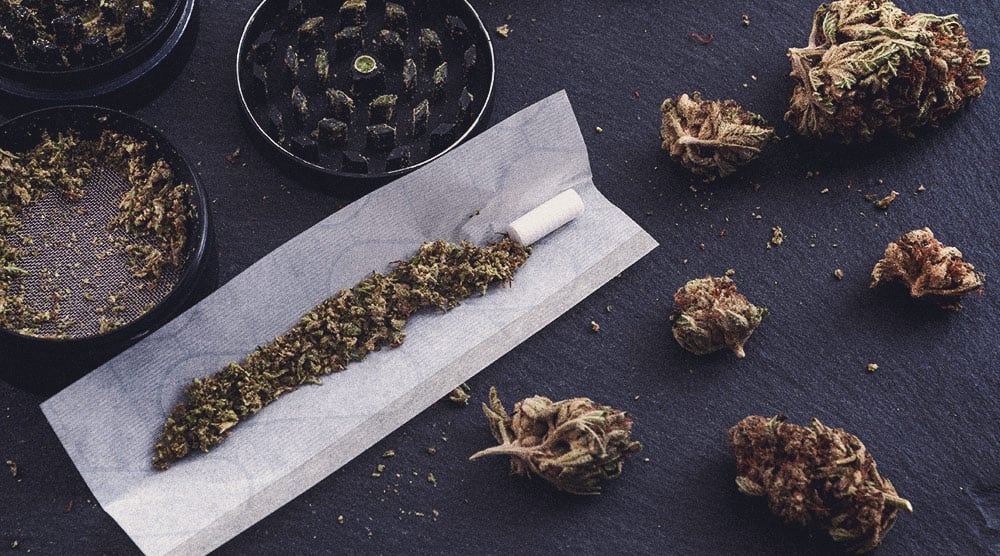
- Vaping: A modern spin on smoking, vaping uses lower temperatures to target desirable phytochemicals without combusting plant material. Much like smoking, it also offers a rapid onset. Although it produces less toxic by-products, it still comes with health risks.
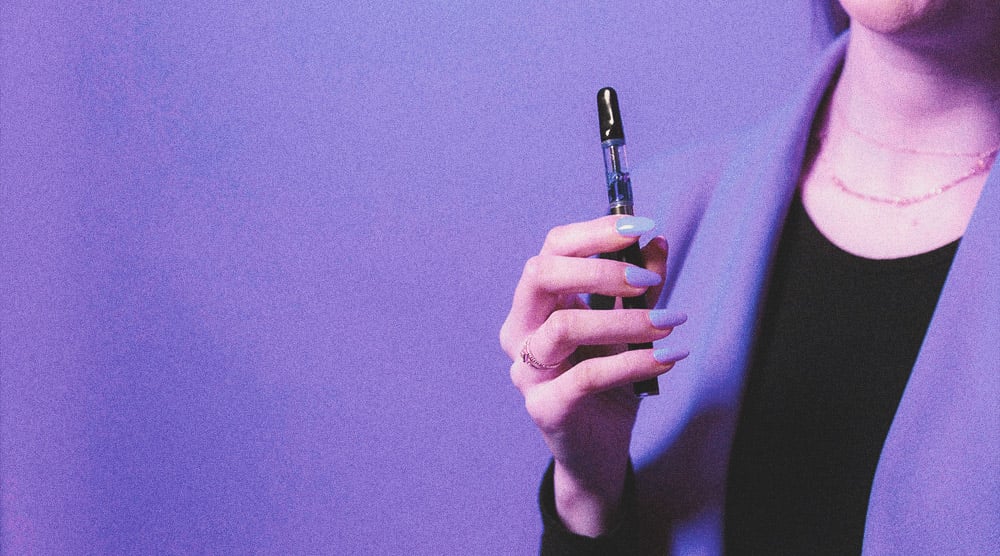
- Oral: Oral cannabis products come in many forms, from gummies and capsules to cakes. This route of administration takes longer to produce an effect, as THC and other compounds must first travel through the stomach and liver. Oral cannabis containing THC hits much harder, as the liver transforms the molecule into the more potent metabolite 11-hydroxy-THC.

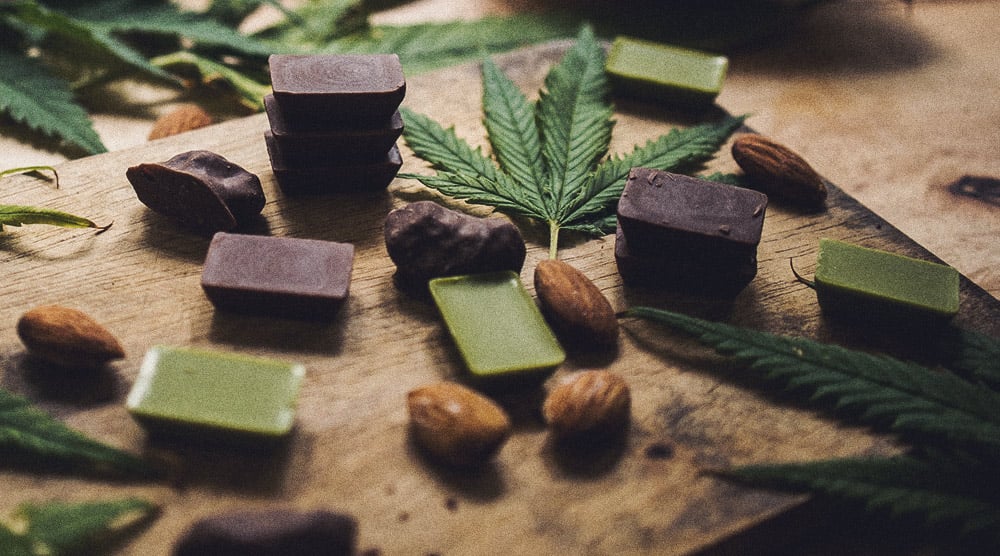
- Sublingual: Extracts and oils placed under the tongue gain rapid access into the bloodstream by diffusing into the capillary bed located here. Sublingual products offer a quick onset while completely sidestepping the health concerns associated with smoking and vaping.
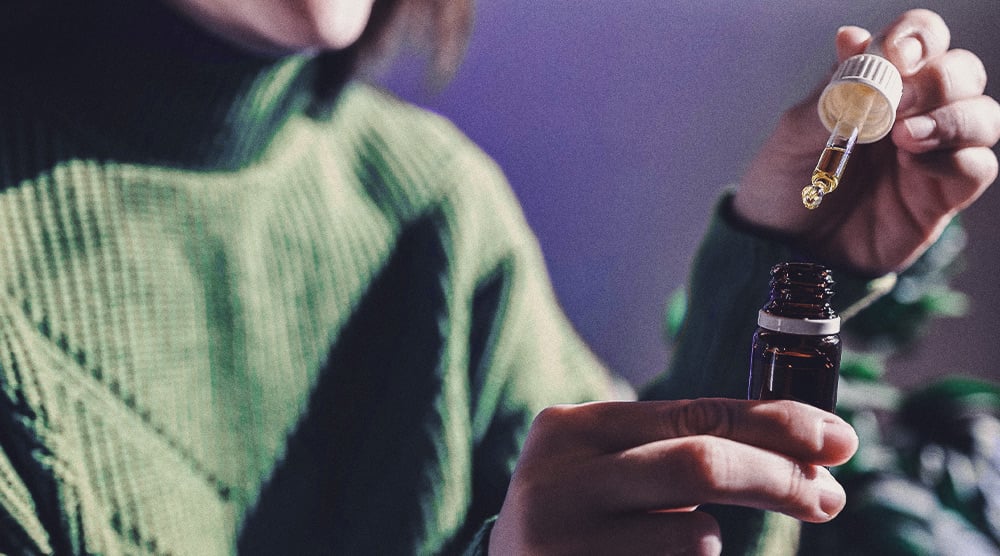
- Intravaginal administration: Products that autumn into this category include cannabinoid-infused tampons. The vagina is recognised as a route of drug administration in the medical field; molecules absorbed here bypass liver metabolism and produce both local and systemic effects.
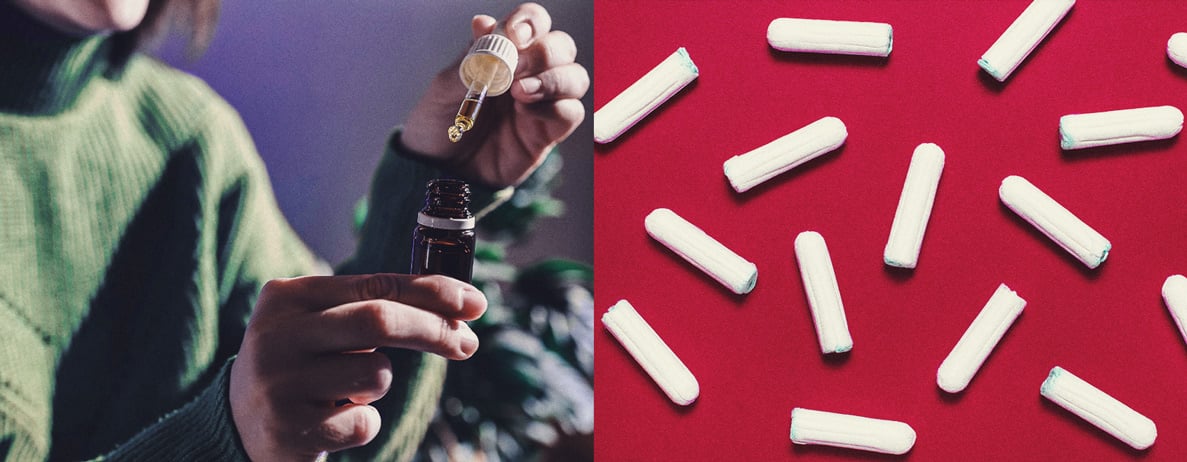

The Role of the ECS In Women’s Health
Cannabis impacts the body in many different ways. However, as its name suggests, the endocannabinoid system (ECS) chiefly underpins the effects of the herb. Known as the universal regulator of the human body, the ECS helps to keep other physiological systems in balance or homeostasis. Composed of signalling molecules known as endocannabinoids, receptors, and enzymes, this network shows up all over the body, including the female reproductive system. Contemporary evidence suggests that the ECS helps to control:
- Mood
- Stress
- Appetite
- Bone turnover
- Neurotransmitter firing
- Ovarian endocrine secretion
Cannabinoids and Endocannabinoids
But how exactly does cannabis influence this system? Surely a herb found in nature only impacts the human body in arbitrary ways? Quite the opposite. Cannabis contains several families of molecules, including cannabinoids. Compounds such as THC and CBD belong to this class. Some of these chemicals (THC included) mimic the endocannabinoids that activate ECS receptors in the body. This means they essentially “hack” the ECS, and serve as a means of influencing the master regulator of the body. Other cannabinoids, such as CBD, work in more indirect ways. Instead of activating ECS receptors, they are able to transiently disrupt enzymatic pathways[2], potentially boosting levels of endocannabinoids.
Cannabis and Gynaecology
Gynaecology is a field of medicine focused on diseases that exclusively affect women. Therefore, gynaecologists treat conditions that affect the female reproductive system, including the vagina, ovaries, and womb. These physicians manage a range of diseases that impact these anatomical areas, including infections, different cancers, infertility, incontinence, and premenstrual syndrome. Researchers are currently exploring how cannabis might one-day slot into this field of medicine.
Period Pain
The results[3] of a questionnaire featuring a sample size of over 400 women, published in the Journal of Pain Resolution, found that around 84% of women experience period pain[4], with 43% reporting pain during every period. Other findings suggest that 5–10% of women experience pain severe enough to disrupt their daily life. Cannabis seemed to help Queen Victoria in this regard, but what does the research say? No controlled studies have assessed the effects of cannabis on period pain. However, a qualitative study[5] published in 2014 asked 192 women if they had used weed to relieve period pain. A strong 85% of the sample answered yes, and 90% of these women said the herb helped. Although human studies are required to confirm this, several companies have already released tampons containing THC and CBD.
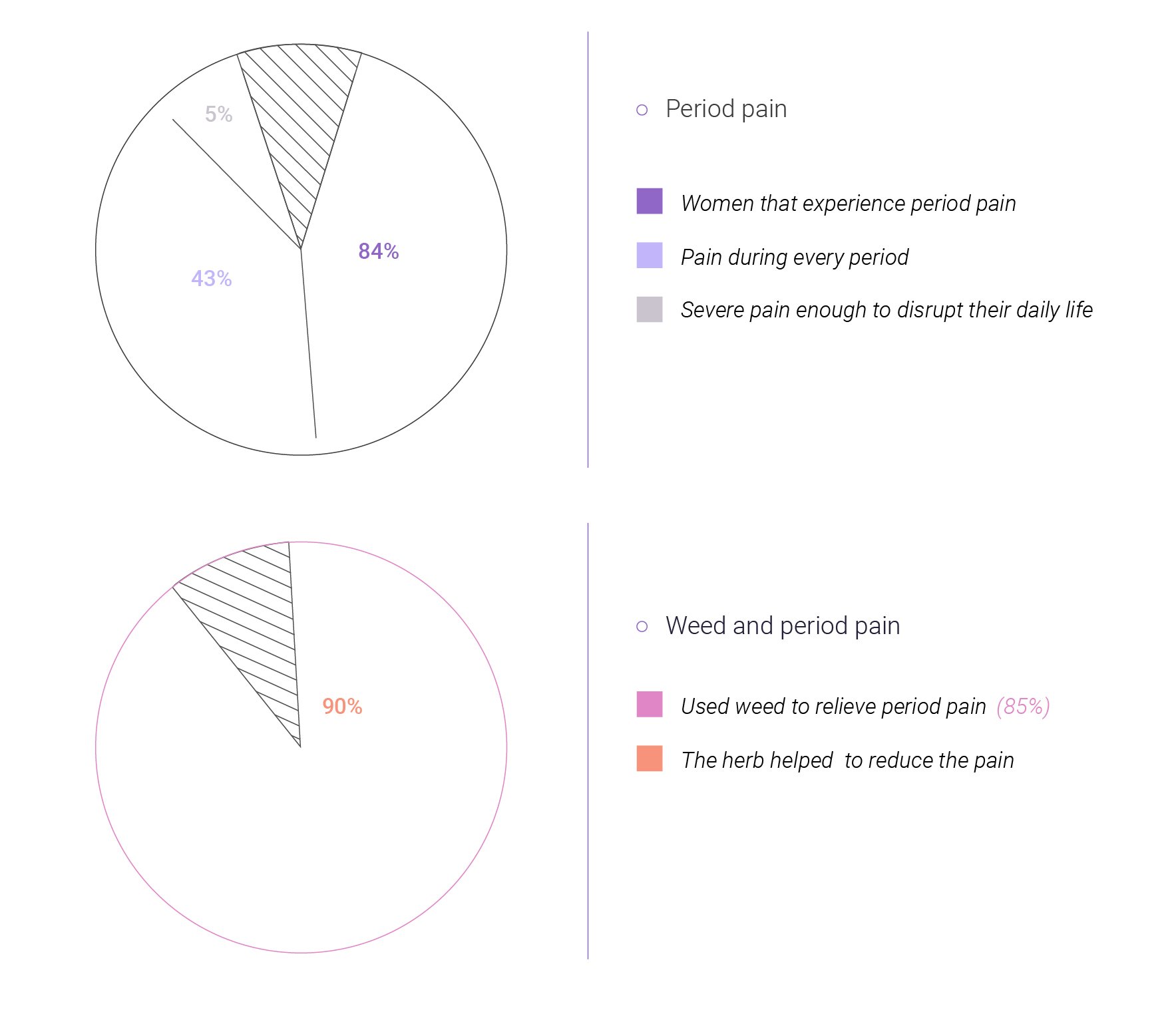
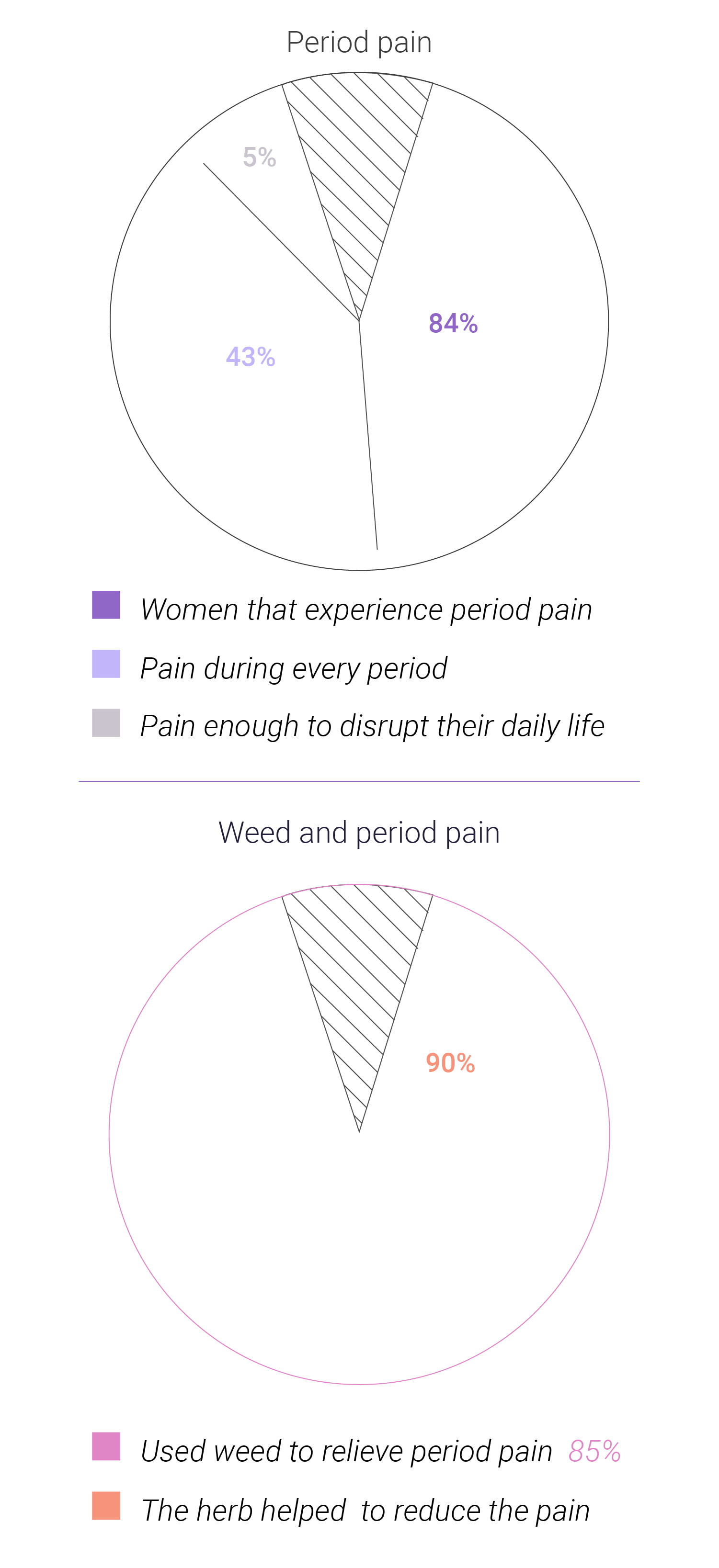
Premenstrual Syndrome
Women often experience a variety of signs and symptoms in the weeks leading up to their period, including mood swings, tender breasts, fatigue, and irritability. Collectively, these symptoms are known as premenstrual syndrome (PMS). As you might expect, not many human studies have pitched cannabis against this battery of symptoms. However, ongoing studies are looking to see if cannabis can combat insomnia, irritability, depression, and joint pain. Researchers state that these conditions share overlap with PMS, and that future studies should explore whether the herb can help to ameliorate the symptoms of PMS.
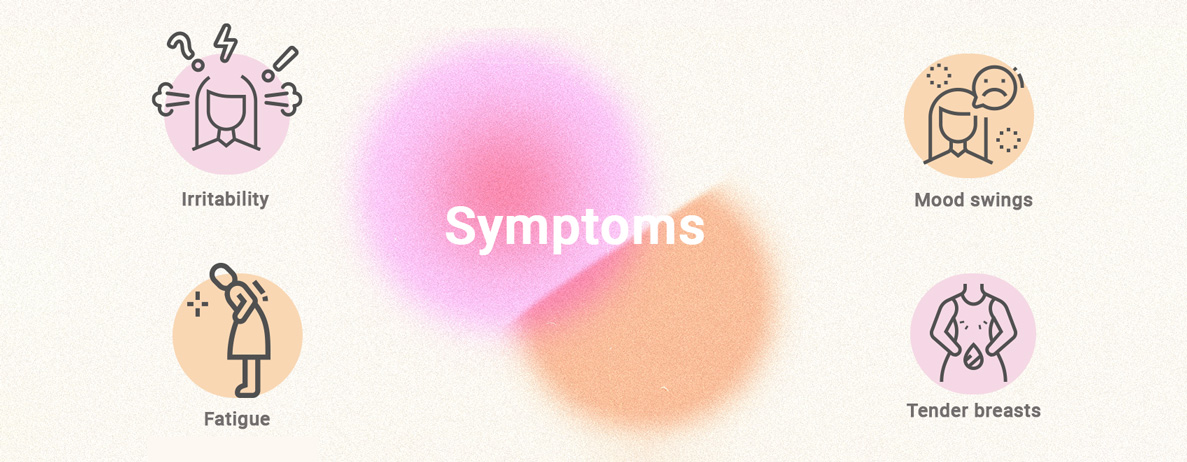
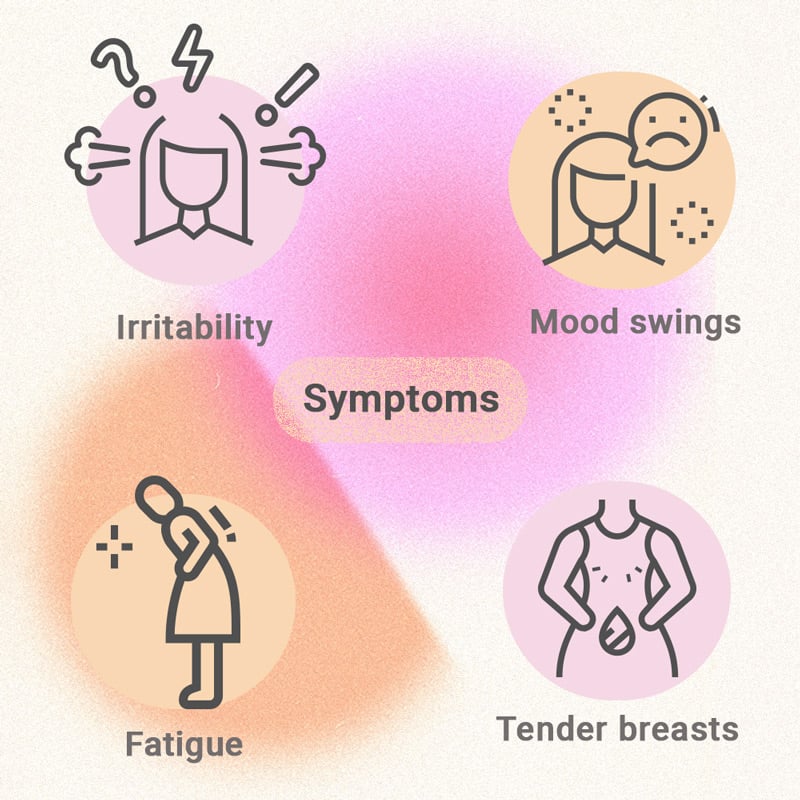
Endometriosis
Endometriosis[6] can affect women of any age. It occurs when the type of tissue that lines the womb starts to grow elsewhere, including the ovaries. This unusual growth causes symptoms such as pelvic pain, pain with intercourse, infertility, and excessive bleeding. A paper published in PLoS One documents a study[7] in which 252 women disclosed how both inhaled and orally ingested cannabis impacted their endometriosis symptoms. The findings show promise for the use of inhaled cannabis for gastrointestinal symptoms, pain, and mood. Randomized controlled trials are required to validate these self-reported results.
Sex
For many, sex serves to deepen intimate connections through physical pleasure. However, not everyone enjoys sex, at least not all of the time. Anxiety, vaginal dryness, and low sex drive are all factors that can cause women to avoid sex with their partners. Can weed improve sex for these women? Ongoing studies are attempting to find out. For example, a 2019 study[8] published in the journal Sexual Medicine sought to find a relationship between using cannabis before sex, sexual function in women, and improved satisfaction with orgasm. While scientists continue their quest, companies have already developed cannabis products for women designed to improve sex, including lubricants.
Menopause
We can’t talk about marijuana and women’s health without discussing menopause—a time when a woman’s periods stop due to lower hormone levels. Typically, this occurs between the age of 45–55. The reduction of hormones such as oestrogen causes a range of symptoms, including hot flushes, sleep issues, palpitations, muscle and joint aches, weight gain, reduced sex drive, and migraine. Does cannabis benefit menopause symptoms? We’re still awaiting solid clinical trials, but a survey[9] published in the journal Menopause found that the majority of women questioned endorsed using medical cannabis for menopause-related symptoms, including sleep issues, mood, and anxiety. What about CBD and menopause? Again, human trials are lacking, but early studies are testing the cannabinoid in models of anxiety[10], pain[11], and migraine[12].

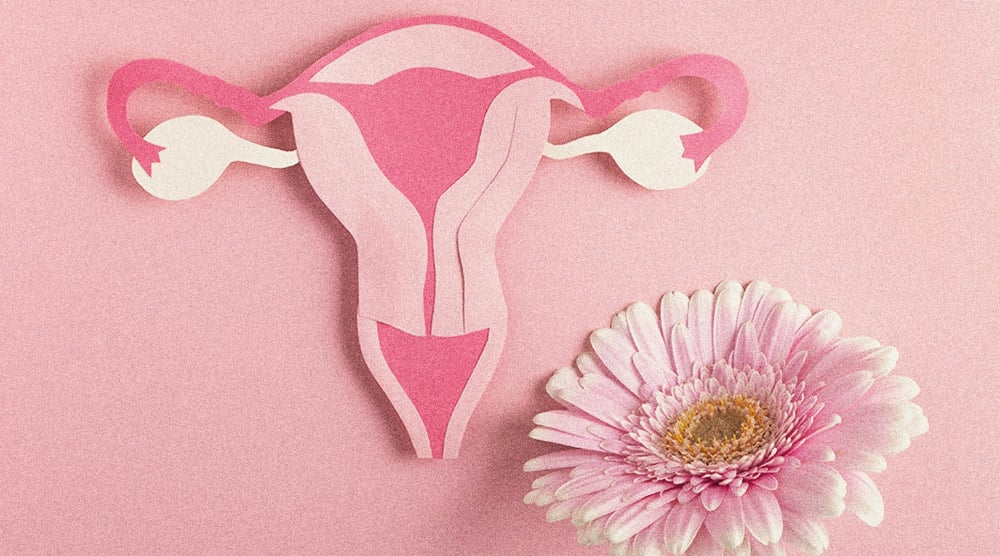
Cannabis and Obstetrics
Whereas gynaecology focuses on women’s reproductive health, obstetrics specifically concerns pregnancy, childbirth, and the postpartum period. Does medical cannabis have a place during this time, or does it cause more harm than good? Find out below.
Pregnancy
Using cannabis during pregnancy remains a highly controversial topic; the thought of a pregnant woman smoking cannabis doesn't bode well with most people. While the majority of women steer well clear of cannabis during pregnancy, a data set[13] published in the journal Addictive Behaviours found that over 14% of pregnant adolescents in the US reported past-month marijuana use. Because pregnancy can cause symptoms such as nausea, some women wonder where it’s okay to use cannabis when pregnant. Right now, the evidence suggests that the risks far outweigh any reward, with associations between prenatal cannabis exposure and impaired foetal growth and development. As far as using CBD while pregnant goes, the Food and Drug Administration in the United States strongly advises against it[14].
Breastfeeding
Breastfeeding is another area of interest when it comes to cannabis and women. Breastfeeding causes varying degrees of pain in many women, making cannabis a tempting natural form of relief. However, using cannabis postpartum can still expose babies to risk. Cannabinoids such as THC are fat-soluble, are stored in the body’s fat reserves, and make their way into breastmilk, which can cause symptoms of sedation and weakness in a feeding child. Based on this, the Centre for Disease Control advises avoiding all forms of cannabis while breastfeeding.
The Future of Cannabis in Obstetric and Gynaecological Health
The future looks bright for cannabis and women’s health. Early studies are exploring the use of the herb for various ailments that affect females, as well as for specific symptoms that overlap with other conditions. Adding to this, female entrepreneurs in legalised countries and states are grabbing the reins and spearheading product design to optimise cannabinoid administration for specific health conditions and symptoms. While the evidence pool remains shallow for now, future findings will likely justify the use of cannabis products for various gynaecological issues. However, the current science suggests that the herb has much less role—and likely poses a danger—in the field of obstetrics.
- Cannabis Treatments in Obstetrics and Gynecology: A Historical Review https://www.tandfonline.com
- Cannabidiol enhances anandamide signaling and alleviates psychotic symptoms of schizophrenia - PMC https://www.ncbi.nlm.nih.gov
- Prevalence of menstrual pain in young women: what is dysmenorrhea? - PMC https://www.ncbi.nlm.nih.gov
- https://www.researchgate.net/publication/283180551Using_marijuana_to_cope_with_the_pain_and_other_symptoms_of_medical_abortions_and_menstrualperiods
- Cannabis and symptoms of PMS and PMDD https://www.tandfonline.com
- Effects of cannabis ingestion on endometriosis-associated pelvic pain and related symptoms - PMC https://www.ncbi.nlm.nih.gov
- The Relationship between Marijuana Use Prior to Sex and Sexual Function in Women https://www.smoa.jsexmed.org
- A survey of medical cannabis use during perimenopause and postmenopause - PubMed https://pubmed.ncbi.nlm.nih.gov
- Neural basis of anxiolytic effects of cannabidiol (CBD) in generalized social anxiety disorder: a preliminary report https://journals.sagepub.com
- The Role of Cannabidiol (CBD) in Chronic Pain Management: An Assessment of Current Evidence | SpringerLink https://link.springer.com
- Medicinal Properties of Cannabinoids, Terpenes, and Flavonoids in Cannabis, and Benefits in Migraine, Headache, and Pain: An Update on Current Evidence and Cannabis Science https://headachejournal.onlinelibrary.wiley.com
- Substance use and teen pregnancy in the United States: Evidence from the NSDUH 2002–2012 https://www.sciencedirect.com
- What You Should Know About Using Cannabis, Including CBD, When Pregnant or Breastfeeding | FDA https://www.fda.gov
- Pregnancy | Health Effects | Marijuana | CDC https://www.cdc.gov




























